THE BUSHWICK LITERATI
A Brooklyn literary scene weighs relics of the past against uncertainties of the future.
SAMUEL HYLAND
In the third installation of “Bells & Whistles,” a column-based fixture of the cult online music publication No Bells, readers are warned of an ensuing origin story that “no one asked for.” A modest set of paragraphs go on to detail, as casually as possible, founder Mano Sundaresan’s mid-pandemic quest to circumvent an unpromising corporate journalistic landscape—one that lent him moderate success as a freelance writer, but not nearly enough of it to be sustainable long-term. “We’ll figure something out hopefully,” he signs off, on the publication’s behalf, in an aspirant-sounding closing paragraph. “But the fact that we’re even thinking about these things… it’s because y’all are reading. So thank you so, so much. I thought I was insane for starting this. Still do, but not as much.” Two years, tens of thousands of readers, and seventeen editions of “Bells & Whistles” later, much of the blog’s down-to-earth ethos has survived: entries often walk a thin-yet-invigorating tightrope between commentary and insanity; the official @nobellsblog Twitter account features as many articles as shitposts; asking questions often comes across with just as much emphasis as answering them. But since its conception in 2020, as much as the blog’s candid rootedness has remained, so have the rigid circumstances that made it such a breath of fresh air in the first place. Two months ago, Sundaresan learned that he was among dozens laid off from NPR amid punishing (and dubiously handled) budgetary restrictions; in the weeks immediately following his firing, PAPER, Vice and MTV News joined a steadily-growing list of once-vital magazines losing long-fought battles with hard luck. The existence of No Bells is a testament to independent music journalism’s boundless possibilities. This does not necessarily mean that it is safe.
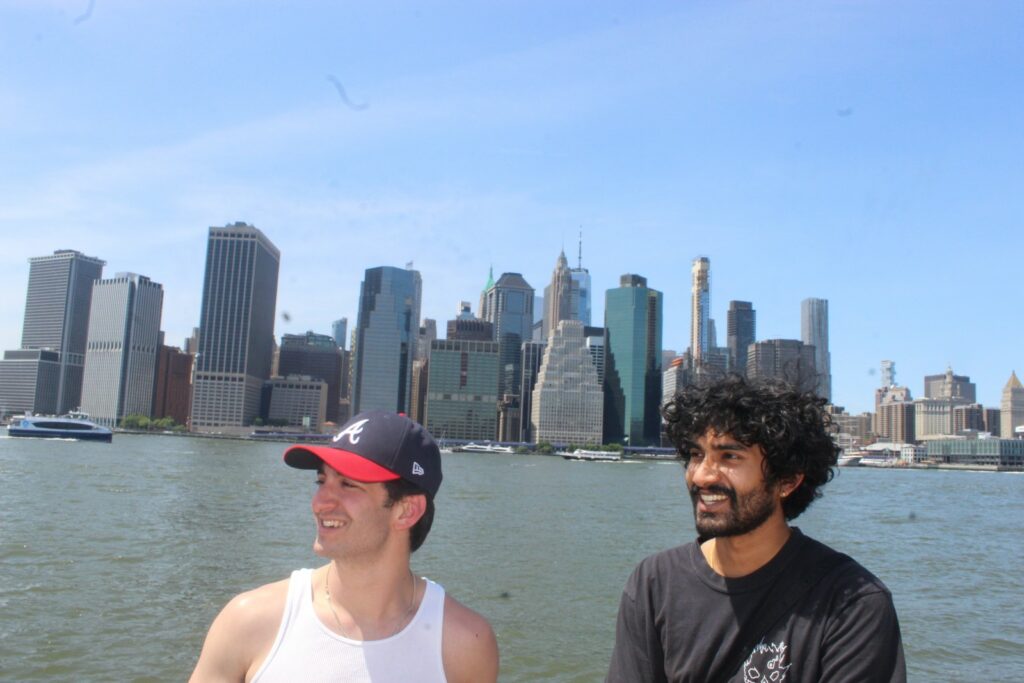
Today, on a muggy Saturday afternoon in Brooklyn, any lack of safety is to be found on an upscale pier bordering the East River, where a dozen or so basketball courts lie in the angular shadows of Lower Manhattan’s skyline. Millan Verma, who edits No Bells alongside Sundaresan, loosely gestures towards a lanky four-man squad—himself, Sundaresan, Sundaresan’s brother Vasant, and a journalist shadowing them for the day—slated to play pickup against a team of large men with equally-large mouths. The most intimidating of these men is a tank-top-clad shot-caller, the sort of player you hate to play against, but also kind of hate to play with. “Get the fuck out of here with that,” he snarls, palming the ball Sundaresan brought along with him for inspection. He settles on a softer-feeling alternative sullenly delivered to him by a teammate, still fixated on the errant previous option. “This shit is the first basketball my mom got me when I was eight years old.”
Sundaresan laughs it off, and it wouldn’t be the first thing he’s had to laugh off over the past few years. Earlier this morning, when he left his Bushwick apartment to commence a traffic-laden commute to the Pier 2 basketball courts, he shared a knowing head-nod with a man blasting rap music a few doors down. “They’re the reason I found out people are actually playing that new DaBaby song,” he said of that residence’s occupants, kicking his Toyota into gear. “That house is really a microcosm of the streets. A lot of dudes pull up there every night in the warmer months and hang out. They play a weird grab-bag of old school New York rap and whatever new song catches their ears. They’re always playing that DaBaby song, and they’re always playing Brooklyn drill. But in a weird way it keeps me connected to what people are listening to in real life.”
“When I go on a big publication—I don’t care which one it is—the writing feels so suited up. It feels like, ‘okay, you’re trying to write a professional piece.’ I think with us, it’s just raw.”
For the three or so years it has existed, Sundaresan’s blog has wedged itself into a similar crossroads between the internet and the world—a fertile Goldilocks zone that finds its niche among hyper-online youth, but balances obsessive online-ness with old-school, feet-on-the-ground journalistic merit. As of the writing of this piece, the pinned tweet on No Bells’ Twitter profile features a brief video clip of Sundaresan, microphone in hand, interviewing bundles of opinionated revelers in line for a sold-out New York City Yeat concert. Many of them are young and fast-talking, overcome with conviction but seemingly unsure of how to wield it beyond their phones. The most affecting moments in the clip are the ones where Sundaresan goes silent, and the fans are left to fumble along heated arguments amongst themselves. “No, bro—I’m not too fucking dumb,” a vein-popping Yeat apologist retorts at one point. “Uzi was not there; monthly listeners were going down. Yeat put him on the feature; monthly listeners on Spotify were going up. I just speak the facts, bro.” Much of Sundaresan’s work hinges on similar premises, documenting discourse as it happens, and tracing its awkward translations from online spaces to real-life streets. The problem, and one he may not be able to laugh off for much longer, is that now more than ever, capturing awkward realities may not be as profitable as capturing press-ready simplifications of them.
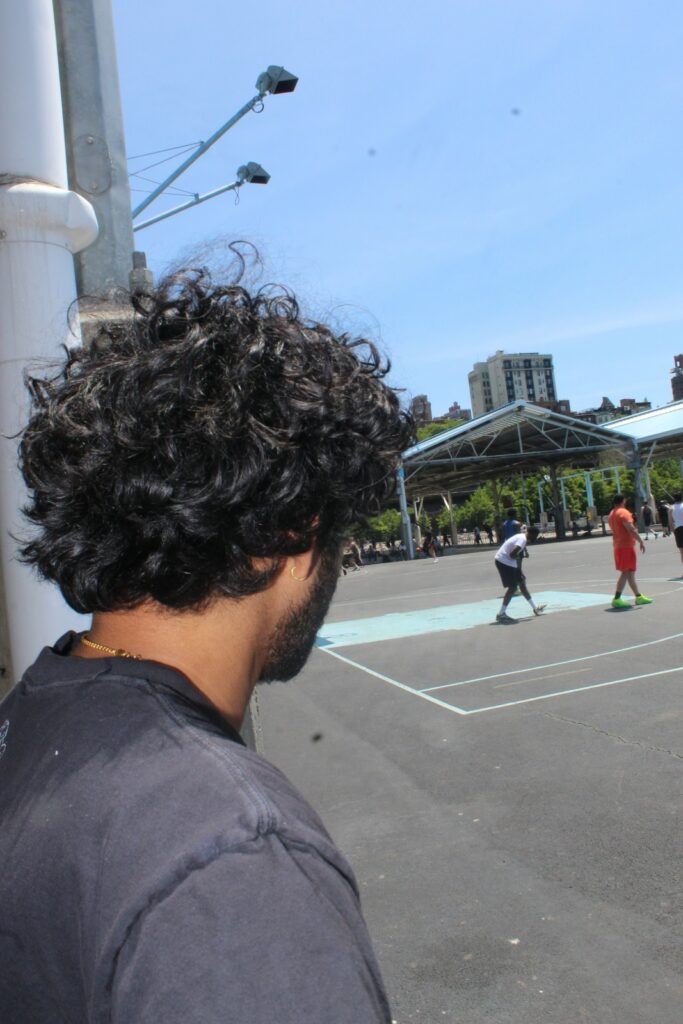
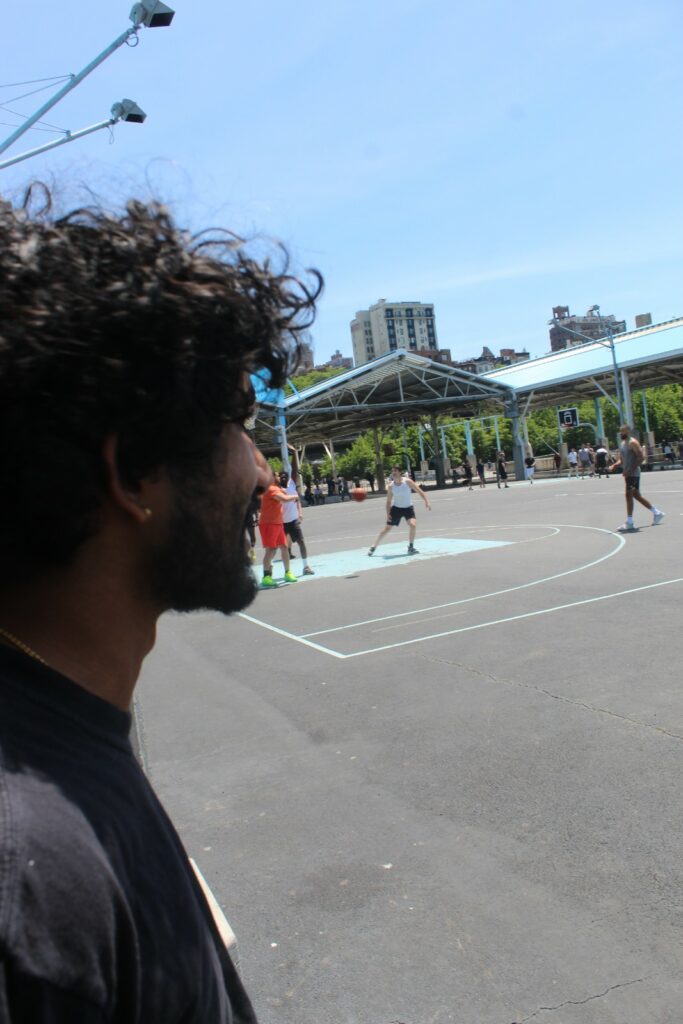
On the basketball court, team No Bells’ performance—far from press-ready—calls for several potential means of improvement: move faster; make shots; get bigger; try looking up from the ball when dribbling; try doing something besides camping in the corners; try dressing in something more hoops-friendly than a black rugby shirt and burly corduroys. The issue at hand is that none of these are immediate fixes—and the other team, especially its talkative leader, knows this very well. By the time a small crowd forms to commence I-got-next proceedings on a nearby bench, the opposition has elbowed, trash-talked, and petty-fouled its way to an 11-5 lead that feels far more humiliating than it looks on paper. Verma, being the sole voice willing to stick up for his sullen teammates, takes on a dual role as both de-facto team captain, and public-enemy-number-one for the opposing squad. In the brief introduction to an April edition of “Bells & Whistles,” Sundaresan details a far more competitive series of one-on-one games played against his co-editor. “Over the weekend I beat Millan at basketball in a tightly contested game to 21,” he writes. “He then destroyed me in the next one. I’m really hot from the corner right now if any NYC men’s league teams are looking for a lanky sharpshooter. My influences are Kelly Olynyk, Jesus Shuttlesworth and Nate Robinson.”
Though today, these sharp-shooting influences don’t necessarily translate well from online to real-life, Verma’s resolve does. A day before the trip to Pier 2, he shared a to-be-published exposé on “Dimes Square,” the photogenic scene of downtown Manhattan heralded for boasting an “indiesleaze revival,” but seemingly harnessing a much darker underbelly than its oft-flattering press is eager to make obvious. In the piece, he came across less like the detached authoritative voice that often makes advertorials sound A.I.-generated, and more like a frazzled guy simply trying to find his way around a tricky, convoluted social makeup. In a literal sense, this is more or less true: Verma lived in Atlanta before he moved to New York late last year, and began attending the sorts of confusing party-qua-networking-events detailed in the exposé as a means of coming to terms with his new home. But more metaphorically, and likely by intention, both the article and No Bells at-large function to similar ends—in a confusing cultural landscape often further complicated by the internet, it tends to readily both admit its confusion, and take willing travelers along on an attempt to turn it into understanding. “I think Millan’s intention with the piece is not to, like, dump on this shit,” Sundaresan said in the Toyota, stuck amidst a chorus of flustered horns in Barclays-Center-Atlantic-Terminal traffic. “I guess calling it [REDACTED] is doing that somewhat, but it’s kind of clickbait. I think the real purpose is to highlight Millan’s own experience as a new New Yorker who got introduced to this shit that he had no idea about before.”
Much of the market for modern artistry hinges on a promise that the consumer—whether a reader, a listener, or something else—may live vicariously through what they are consuming. Some artists make this process more difficult than others, and depending on who you are, the difficulty can be fun, too. The line separating No Bells from its corporate counterparts falls heavily along the same distinctive contours. When tied down to an entity with corporate interests, arts & culture reporting often bears potential to take on robotic, assume-the-reader-knows positionality—which has its applications for those who do already know, but may not necessarily translate for the growing population, often young, looking to learn. The game No Bells has signed up for is one that seeks to balance real-world credibility, and layperson appeal, with an unforgiving media climate foaming at the mouth to devour similarly-premised non-corporate entities within one misstep. Thus far, if you ask them, the impact is worth the lofty risks. “We’re just taking our ties off,” Verma said in a phone call this past April. “When I go on a big publication—I don’t care which one it is—the writing feels so suited up. It feels like, ‘okay, you’re trying to write a professional piece.’ I think with us, it’s just raw.”
👔👔👔
“I love the idea of it becoming like a movement, almost—Mano said it as a joke once, but ‘The Bushwick Literati’.”
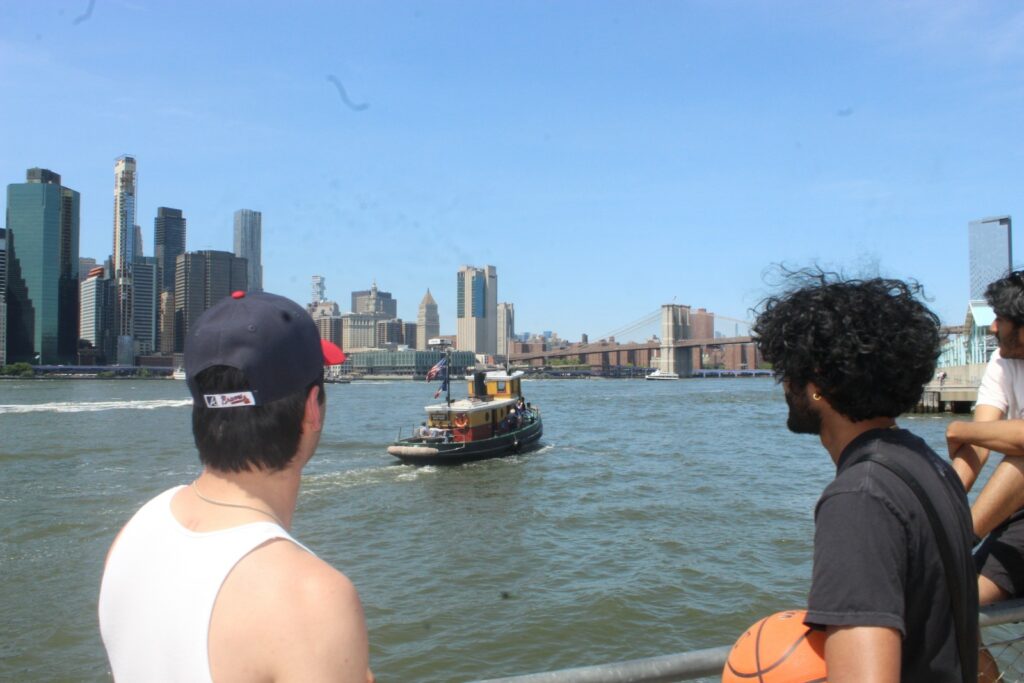
Late last month, No Bells published a story surrounding DD Osama, the prodigious 16 year-old drill phenom whose ceilingless trajectory is increasingly complicated by his brother’s gang-related murder. He’s a favorite of the aforementioned music-blasting neighbors, and someone Sundaresan often wonders about. DD Osama’s fan-base is predominantly made up of elementary and middle schoolers just old enough to bop their heads to his music (or fawn over his looks), but too young to understand—let alone be exposed to—the grisly realities that contextualize it. “It seems really fun to them—like, they really just enjoy his music. But I wonder if they know about all the lore,” he mused. “Rapper beef… they don’t have to know about the shit. But I wonder if they do.”
“It’s not a very popular form of content. People watch TV, stream music. When journalism was its most read in the 20th Century, that was because it was higher up in the pecking order as a form of entertainment. You dedicated your attention and your free time to reading these writers. I don’t see that happening again, ever.”
He thought for a second, then pivoted to the then-latest episode of NPR’s Louder Than A Riot, the social-commentary podcast he and an entire team of producers were laid off from amid the company’s recent budgetary cuts. In it, Rodney Carmichael, who co-hosts the series and writes about hip-hop for NPR Music, grapples with the prospect of allowing his young son the gift of rap culture, all the while reckoning with its flaws—many of which he doesn’t intend to pass down. “It’s a very personal, memoir-y episode about the experience of bringing hip-hop to your children,” Sundaresan said, “and doing it in a way where you’re not giving them all the bad parts, and you’re not making them toxic male figures, but you’re also letting them experience the joys and beauties of the art form.” No Bells often finds itself with similar responsibilities: it’s one thing to be a young consumer’s gateway drug; it’s another thing to, as the blog has long done, walk said consumers through the often-ugly truths of what exactly they’re getting themselves into. A story like Carmichael’s is one that Sundaresan’s publication constantly seeks to echo—asking existential questions when they arise, rather than feigning understanding to meet a deadline. The most telling thing about the media landscape No Bells must brave is that Carmichael’s show was canceled.
By the time the tank-top-clad shot-caller sinks the game’s final basket, so are any plans for the freshly-routed lanky squad to play any longer. “We’re just going to grab something to drink and come back,” Sundaresan tells an inquiring member of the winning team, as Verma, his brother, and the journalist gather their belongings. The group trudges past dog-walkers and old couples along a sunlit boardwalk, exchanging No Bells tidbits and Kendrick Perkins slander en route to a bench looking out on the East River. At some point, the question comes up of what exactly is wrong with music journalism, and what needs to happen in order for it to improve. “It’s just hard,” Verma says, through an exhale that can either be because of the game or the foreseeable future. “It’s not a very popular form of content. People watch TV, stream music. When journalism was its most read in the 20th Century, that was because it was higher up in the pecking order as a form of entertainment. You dedicated your attention and your free time to reading these writers. I don’t see that happening again, ever.”
While No Bells may not have the power to make reading the nation’s preferred form of entertainment, it often seems well aware that it at least has influence—enough of it to bring people together, and in a grander sense, lug online communities into real-life spaces. It’s an impulse evidenced by the sizable grab-bag of events, often non-literary, thrown by the blog since its conception, typically more geared towards curating moments than wooing new readers. Late last year, No Bells hosted the prolific rapper RxPapi’s first show upon his release from prison; This past February, Sundaresan and co. encouraged local writers to attend a first-ever official blog-run “Town Hall” reading event at Molasses Books in Brooklyn. “For those in the area looking to attend, expect to hear Gladys Knight and Luh Tyler on the same playlist, expect to talk and drink and make awkward advances toward the bar and bathroom, to step outside and meet your next best friend (or enemy), and to listen to the wonderful batch of writers we’ve gathered (myself omitted),” Verma wrote in a brief announcement posted to No Bells’ website. “Scathing criticism and bold personal paragraphs will be projected for all to hear. Cigarettes will be inhaled, Preisdentes guzzled. It will be sweaty and our feet will hurt but I would love for us to endure this together.” In a media landscape where no writer, nor entire publication, is guaranteed to endure, No Bells often relishes in navigating uncertain realities alongside people who would otherwise have to do so alone.
Much of the blog centers on hip-hop scenes and the various characters that make them, but over time, the work it’s done to translate URL to IRL has resulted in a steadily-unfurling scene of its own. “I love the idea of it becoming like a movement, almost—Mano said it as a joke once, but ‘The Bushwick Literati’,” Kieran Press-Reynolds, a friend of Sundaresan’s and occasional No Bells contributor, said in a phone call last month. “For me personally, it’s provided an oasis in a desert of not really having fun. Don’t get me wrong—there are a lot of people doing really cool things. I work a 9-5 job at a publication where I get to do fun stuff, but I can’t always do the passion projects that I want to. No Bells has created a space where I’m friends with the people who run it, visually it looks super inviting, and they’re super encouraging of my wildest ideas.”
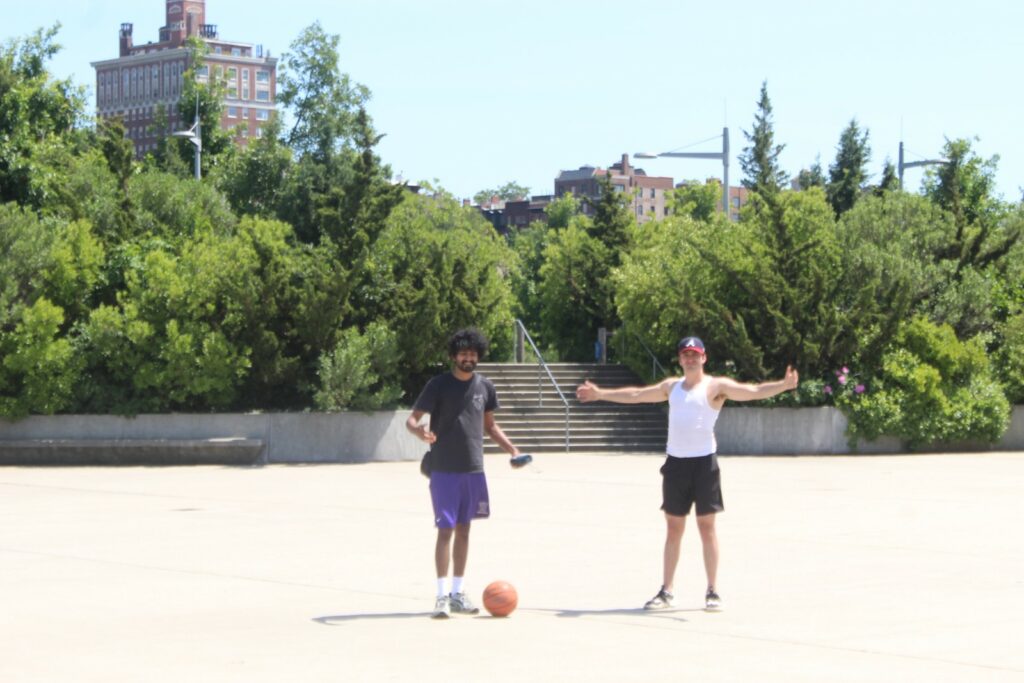
Among these wildest ideas was a sprawling deep-dive on “corecore,” a TikTok-bred trend—or, if you want, artistic movement—that sees disparate cultural touchstones melded together at lightning speed to trigger a sort of weird catharsis. Last year, Press-Reynolds’ piece on it went viral, lighting a long-awaited fire underneath a realm ripe for critical analysis; a few months later, a polarizing follow-up begged the question of whether it was radical art or gibberish shitposting. “For the first corecore one, me and Mano were at a restaurant and I was trying to explain it to him for like 20 minutes,” he said. “I think it made no sense. But he was just like ‘Yeah, write it for me.’”
On the drive back from Pier 2, Sundaresan listens to two compact recently-released rap albums—the Florida-born rapper Niontay’s Dontay’s Inferno, and the Detroit trio HiTech’s DÉTWAT—all the while offering the occasional one-liner critical insight. At some point during the song “WHYYOUFUGGMYOPPS,” he notes that many of the melodies on HiTech’s LP are longing and sorrowful, snug fits for the group’s lovestruck, street-borne modern-day soliloquies. Depending on who you are, it’s easy to read these remarks as overintellectualizations. You wouldn’t be alone: in the first iteration of the blog era, when messianic acts like Chief Keef heralded a new vanguard of rap saviors, a common argument among detractors posited that bloggers were applying far more thought to the music than was necessary. For Sundaresan and No Bells’ sprawling cast of characters, this particular grievance doesn’t seem to be much of a concern. But it doesn’t necessarily mean that blogging’s problems ended with its first major ascent. In a rare sincere tweet from the @nobellsblog Twitter, Sundaresan replied to a call for questions put out by The Blog Era, a documentary podcast-slash-Twitter-personality seeking to educate younger audiences on its titular decade. “What can newer blogs learn from your era?” his question read; the podcast’s response was “how to monetize and retain ownership.”
“I retweeted it, even though I’m not sure I fully understood what they were saying,” Sundaresan admitted. “I guess they were just concerned for us. They said to monetize and retain independence. I agree with where they’re coming from. But if that’s all you’re thinking about as a blog, what’s the point?
“Obviously, I’m thinking about that, especially as this thing gets bigger,” he continued. “But I can’t help but notice that they had said nothing about community, or music. It was just about ‘okay, this is how you make money.’ Which, maybe that’s the main goal—I don’t know. But I just started this thing as a way to get these thoughts off.”
A fittingly-titled fixture of No Bells is called “Raw Thoughts,” and features Sundaresan and Verma replying in-depth to, well, “Raw Thoughts” submitted by paying Patreon subscribers once every month. In the first installment, one jumbled spiel asserts the following: allan kingdom’s talk to strangers project deserves enshrinement and our elected officials should reserve time in their schedules to watch mano on-camera content to learn useful information and heal the cavernous rips in their soul tissue godbless no bells forever. In true No Bells fashion, Sundaresan’s response deflects the praise in favor of furthering a line of questioning, rooted in admissions of what he himself has left to learn. “Confession: I have never listened to this dude in my life besides his part on ‘All Day,’” he offers. “I’m listening to Talk To Strangers now. It’s giving ‘you had to be there’ / ‘I made a rap album for my undergraduate thesis.’ Kendrick inspired a lot of bad rapping. He just said ‘retarded’ in the derogatory way. This is blog era gunk to my ears.”
📚📚📚
“There’s very little in the way of a music scene out there, let alone a rap scene,” he said in the car. “We basically had to create our own fun.”
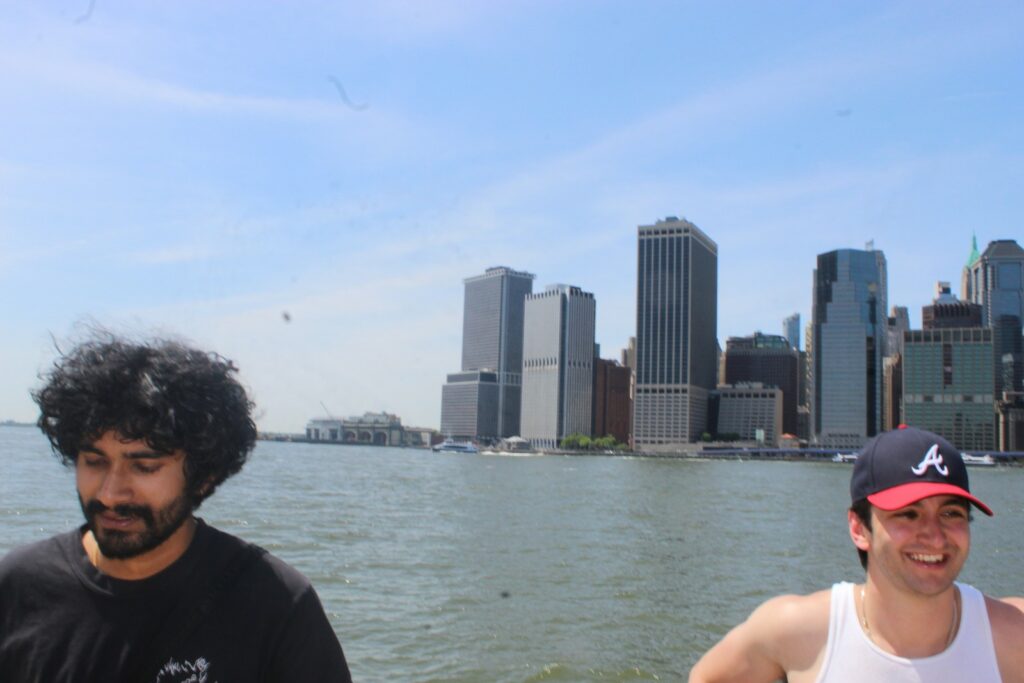
Both in conversation and across the work he has published on No Bells, a term Sundaresan often employs is “lore”: a popular word, especially among gamers, that denotes the vital contextual elements for understanding a certain character or sphere. Something the blog has done successfully since its founding is unfurl, through deep-seated analysis, nuanced worlds from the stories and songs that make up particular locales. “We cover music from so many different scenes—I think it’s overdue that we just visit them,” he said of in-progress plans for No Bells in a Zoom call last April. “Having it sort of embed where they are. For instance, I’ve been watching a lot of Anthony Bourdain videos. Obviously, it’s different because that’s food vs. music, but just seeing him in some artist’s favorite restaurant, or something. I want to do shit like that: meet artists where they are.” Sundaresan’s own lore is humble, and perhaps it’s a factor in the effort he takes in bringing everyone else’s to larger-than-life proportions. He grew up in Shrewsbury, a quiet suburb of Central Massachusetts, though for simplicity’s sake, he often tells non-locals that he’s from Boston. Something Shrewsbury has in common with the hundreds of other towns not likely to be found on refrigerator magnets is a difficult music scene to trace, let alone immerse oneself in. “There’s very little in the way of a music scene out there, let alone a rap scene,” he said in the car. “We basically had to create our own fun.”
When little fun was to be found in real life, as was the case for the many zillenials who found themselves stuck in similar positions, the answer was to find—or invent—it on the internet. Among those faced with these options was Srikar Poruri, a student who lived in Grafton and went to Sundaresan’s nearby Catholic high school. “He was a senior when I was a freshman. He was like the cool older kid that me and my friends thought were cool,” Poruri said of Sundaresan in a recent phone call. “We were in a random math club together—he was, like, the worst senior at math club, and me and my homie were like the worst freshmen. So we were on the same team and we just started talking.”
“A big part of the problem with music journalism right now is that people just aren’t doing it on cool-looking websites. Kids aren’t reading Substacks.”
The pair followed each other on social media and occasionally exchanged memes; by the time Sundaresan graduated in 2015, they had stayed in touch, though not for much beyond the occasional DM. In the time spanning between Sundaresan’s collegiate experience and his own, Poruri saw what he had been doing, and found it interesting. (“I saw him doing things like being involved in college radio; I was like, when I go to college, I want to be involved in college radio, too.”) He started doing college radio at UCLA in 2018, and quickly grew curious about what else music media had to offer. Radio turned into photos, which turned into videos, which turned into covering shows, which turned into writing. Interspersed throughout the progression were intermittent messages to Sundaresan—“Hey, uhh, Mano… how do you write?”—who had, in real time, been embodying future points on the music-media conveyor belt. He had a loose sense of what he enjoyed doing, and a living blueprint for what was possible if he continued, but much of the rigid structure necessary for making it more than a hobby was missing—a similar puzzle, perhaps, to those faced by the many culture writers currently fielding trepidatious, work-by-day-freelance-by-night grinds.
Poruri graduated in 2021, a feat dulled by looming loneliness: he finished a year early, which meant while he was freshly on his own to figure things out for himself, all of his friends were still on campus. He also lived on the complete other side of LA—a geographic separator made even more limiting by the city’s notoriously-tricky transportational infrastructure (especially if you don’t have a car). “It was just not a good time,” Poruri said. “I was struggling a bit.” Later that year, he checked his Twitter to find that Sundaresan had put out an open request. The call was for someone versed in graphic design to make an image, preferably early 2010s Datpiff mixtape cover-esque, for an article about a new batch of silly SoundCloud up-and-comers. Up to this point, Poruri had begun using the laptop given to him by his job—complete with free access to the Adobe suite—to flirt with design projects in his free time, but without much intention to follow through on either them specifically, or graphic design writ large, on a permanent basis. “Mano tweeted that, so I DMed him like ‘Yo, I can do this, I’d love to help, here’s some stuff I’ve been doing recently for fun,’ just to prove that I at least knew how to do something,” he said. “And he was like, ‘Oh, okay, sick. Yeah, let’s do it.’”
“Right now, it does feel like I’m doing a lot of work. But it still feels fresh to me. I don’t want it to ever not feel fresh.”
The resulting graphic is as much a trademark of Poruri’s style as it is a relic of No Bells’ visual ethos: the sort of endearingly-dramatic party-poster-slash-mixtape-cover that features purple palm trees, stacks of Benjamins, and cutouts of that one swagged-out Zendaya Instagram post from 2013. The mixtape aesthetics quickly became a signature for the blog, undergirding its evolution from beginner WordPress site to independent cultural entity. On the basketball courts at Pier 2, Sundaresan brought up the writer Miranda Reinert, whose online column centers on the practice of writing about music. “A big part of the problem with music journalism right now,” he said a recent piece of hers made him realize, “is that people just aren’t doing it on cool-looking websites. Kids aren’t reading Substacks.” It’s an interesting sentiment in a discourse rife with callouts of fallacious writers, or fallacious publications, who fail at the content level to attract a younger generation of readers: while industry people bicker about what the other is doing to make writing inaccessible, perhaps the estranged teenager has long moved on to something more obviously catered to estranged teenagers.
No Bells is a cool-looking website, and one that takes daily upkeep—a process Poruri spearheads, along with a small core group, on an on-call basis. “We have this group chat, and Mano will be fresh off his coffee I guess,” Poruri said. “He’s on the East Coast and I’m on the West Coast now, so I’ll see the texts when I wake up. Stuff like doing a graphic, tweaking the site, or editing a video.” As human as the writing on the blog often sounds, it’s easy to forget that the site itself, and the sprawling footprint it has amassed, are the product of people and their ideas, rather than corporations and their connections. Earlier in the morning, an hour or so before the road trip to Pier 2, Sundaresan called out from the Toyota to a journalist waiting on his porch, explaining through apologies that he’d be right there after he found parking. Inside, as he readied himself for a day of hard-fought basketball games—a process, embedded in which was the more complex process of inserting contact lenses—it was instructive to imagine that the space was, more or less, No Bells headquarters: its malfunctioning fire alarm and dispersed fruit products a far cry from the cubicles and dining halls accenting the bases of other, more moneyed, media operations.
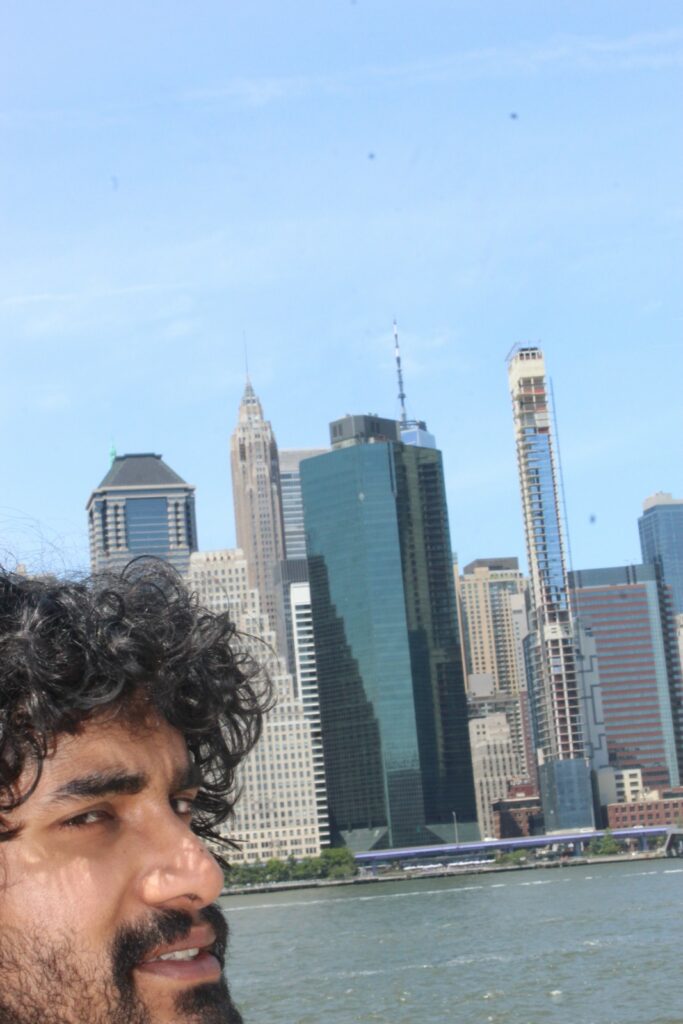
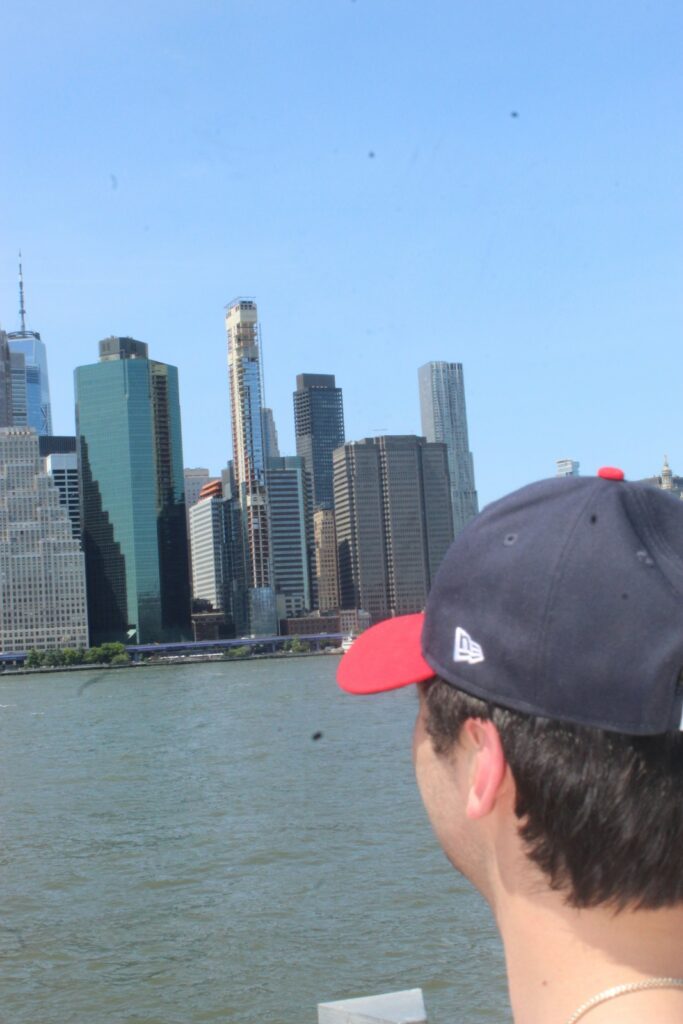
As much as Sundaresan’s blog thrives on capturing the internet, its supportive backbone is predominantly powered by a network of real people and word-of-mouth merit, surviving on conversations that occur less on email chains, and more on sidewalks. Recently, Sundaresan met with Daisy Alioto, a fellow Massachusetts native who founded the sprawling digital pop culture conglomerate Dirtyverse. “Hearing her talk about how Dirt became scaled into an independent publication, that actually has salaried employees, was inspiring,” he said. “She works really hard. She never is not working on that shit. She said that it’s the best feeling to not work for somebody else—to own something of your own. Which is definitely the goal, I guess. I don’t know. I just want to keep this shit independent for as long as possible.”
Asked what would stop it from being independent, Sundaresan paused for a moment, mouthed the beginning of an answer, then paused again. “If it starts to not feel fun,” he started, eyes on the road. Freshly free from Barclays Center traffic, he took a second to think some more. “Right now, it does feel like I’m doing a lot of work. But it still feels fresh to me. I don’t want it to ever not feel fresh.”
💻💻💻
“The more people that are doing it, and the more spaces that are allowing people to do it, is the more we figure this out.”
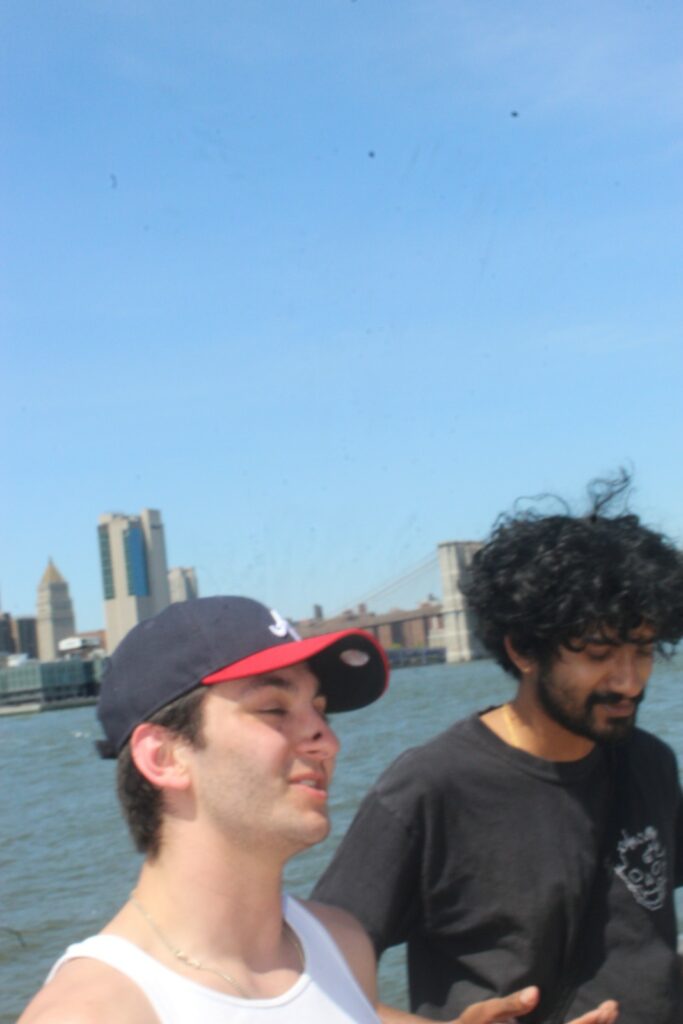
Sundaresan has been off the grid twice within the past few months: once by circumstance, and once by intention. The former of these lulls arose from a spurt of bad luck in Miami, where, on a recent boat trip, his cell phone fell out of his pocket and into the Atlantic Ocean below. (At Pier 2, he continually has to reassure his brother that it wasn’t because he was doing anything stupid.) The latter, on the other hand, was because he was in Massachusetts for a family event, and wanted to take a rare moment to stop. His family had just experienced the death of a close friend; he got the news amidst a hectic week at Louder Than A Riot, and quickly made plans to be with his loved ones. “Last weekend, I visited Walden Pond,” he wrote of the trip in the following week’s “Bells & Whistles” installment. “It is a fairly unremarkable body of water in Concord, MA, made famous by Henry David Thoreau, who was so enamored by the beauty he saw in it that he wrote a whole book about it. Kind of the original influencer if you think about it.” It’s interesting to see the situation as a somewhat rare, twilight-zone mashup between blogging’s past and its future—two people, as different as their respective eras may be, getting their thoughts off about the things they find interesting. But Sundaresan being off of his phone also poses real-life questions that have always loomed, not just for his publication in particular, but for every online entity that has ever claimed to mean something. Putting one’s thoughts on the internet is one thing. What happens when, much like the vein-popping teenagers in line for the New York City Yeat concert, those thoughts must have weight in real life?
“I have rap music to thank for grounding me through it all.”
The question relates to Press-Reynolds’ work for the blog on Corecore, and whether it has any concrete meaning outside of its shitposting ethos. For anyone who’s come across the phenomenon on TikTok, or the countless ones that walk similar funny-or-important tightropes, lines of argument like these—ones that seek to document the confusion, rather than diagnose it—seem to be both increasingly present, and increasingly vital. As complex questions grow more difficult to fit into single headlines, they also become more difficult to place in the publications that earn money from them. The gray area between tough-to-nail concepts and press-ready ones is a space No Bells hopes to fill. “It’s really inspiring to have that as an option,” Press-Reynolds said. “It’s definitely inspiring a lot of young people, too. I’ve seen a ton of new voices, just within the past year, just looking up to No Bells as it gains traction. I really hope it inspires other people to start blogs, too, because there’s just so much shit everywhere, and music is so fractured and fragmented, that literally it’s just impossible to keep up—let alone be dissecting and understanding what’s happening. The more people that are doing it, and the more spaces that are allowing people to do it, is the more we figure this out.”
And figuring it out, after all, is a process that can happen in real time, in front of real audiences. In the car, as he waited to pick up his brother en route to the Pier 2 courts, Sundaresan spoke excitedly about Fulcrum, a San Francisco-based YouTuber who regales his followers with live accounts of getting high in disparate locations. For the seventeenth installment of “Bells & Whistles,” which documented his experience at a Brooklyn show of his, he wrote a brief intro that contemplated both hip-hop and the recently-wrapped Eastern Conference Finals. (Sundaresan is a Celtics fan). “It’s been a week of extremely high highs and low lows,” the section reads, and there isn’t much reason to think he’s lying. “I feel like life isn’t supposed to move like this, but sometimes the rush is exactly what you need. I’m talking, of course, about the Boston Celtics, a team that, in the span of 7 days, made history, elevated one of its role players to a local legend, and finally reverted to their old, loser ways, choking Game 7 in the ECF to the overachieving Miami Heat. Insane beautiful disgusting hell. I have rap music to thank for grounding me through it all.” Much of No Bells’ appeal lies in the fact that it isn’t necessarily pretending to have the answers, nor be invincible, to the predicaments and uncertainties that plague its readers. At the end of the day, they’re figuring it out like anyone else—the sole difference being that they have a WordPress domain to document the process.
On the blog’s still-young YouTube channel, the majority of a small selection of videos are titled “Waiting for (Artist),” and feature pre-concert accounts from within lengthy lines snaking around event venues. While many similarly-premised vloggers already stake some sort of devotion to, or knowledge of, whatever scene is being showcased—for every Opium-adjacent rap concert admission line, there is a guy with a microphone—the interesting thing about Sundaresan’s versions is that he often very visibly doesn’t know what exactly he’s getting into. “I don’t know what’s going on here. I’ve never seen so much Rick Owens in my life,” he says in one video, heralding a crowd of leather-outfitted teenagers awaiting a Ken Carson show at Irving Plaza. A stern security guard tells him to “take that over there,” and in the next shot, he’s standing against a quiet corner, listing off a set of questions he hopes to answer for both himself and his viewers. “I’m just here. I’m not really a big fan of Ken Carson, but I’m curious about what his fans think of the music, why he’s so popular right now, is he just a Carti clone, is he something better… I’m about to figure this out.” Perhaps the refreshing thing about No Bells is that, as Sundaresan and co. are figuring it out, so are their audiences. The catharsis isn’t in one entity granting the other an answer; it’s in both entities arriving at an answer—or failing to—at the same time.
“What elevates it from a good rap song to a Boston classic is that it somehow feels like emptiness and everything at once. It casts a spell on me no matter how many times I’ve heard it. It’s a song about home that sounds like home.”
No Bells gets its name from a raucous song by the rapper Cousin Stizz, one of few people Sundaresan and Poruri could have looked toward in the way of a Massachusetts music scene. “We’re from a small town—we both got into this internet stuff because where we’re from, there was nothing else music-wise to turn to,” Poruri said. “I’m sure Mano would say the same thing: literally, me and my friends were the few kids that really cared about music. You weren’t going to the shows around, because there weren’t that many shows around. So you found a lot of stuff online.” Perhaps the publication finds a target audience in the massive revolving door of youth who will, no matter how far ahead you turn the clock, always face similar limitations. For Sundaresan, Cousin Stizz’s song was among the few vital touchstones that, aside from the internet, made him feel connected to something larger. “‘No Bells’ isn’t just a flex,” he wrote, in a 2022 essay on the rapper. “What elevates it from a good rap song to a Boston classic is that it somehow feels like emptiness and everything at once. It casts a spell on me no matter how many times I’ve heard it. It’s a song about home that sounds like home.”
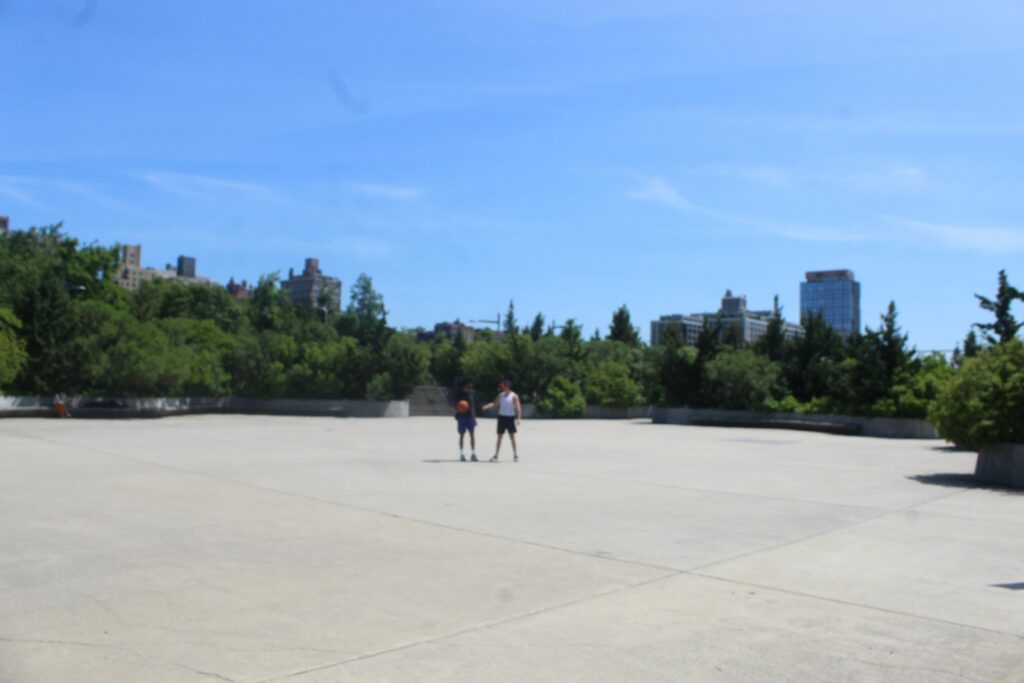
For the cast of characters who continue to comprise No Bells’ sprawling lore, it may not be far off to say that the blog functions to similar ends. Blogs, after all, are more or less appendages of the internet they live in: vacuums of space that bring unlikely collaborators on a common search for equally-common unknowns. Often unknown, too, are the powers who bring them to life—perhaps by design, and perhaps for the better. Both in-person and online, Sundaresan seems more eager to shy away from attention than relish it; more often than not, he’s quicker to answer the questions about his work than the ones about himself. In the detritus of blogging’s first popular iteration, much of the anonymous, collaborative ethos that first defined it has been replaced by podcast microphones, all-out personalities, and drama—reported on by the very same all-out personalities—when said figures inevitably clash. (“It is true that someone with a very particular, unique voice was at a keyboard 15 years ago, and now that same kind of person is behind a microphone,” Eric Rosenthal, a co-founder of the aforementioned Blog Era podcast, told the New York Times this past month.)
But somewhere in the center of it all, in the pockets where the internet awkwardly stumbles into reality, the powers responsible are content to let the people speak for themselves. “It’s so bad… I want to change this,” Sundaresan laughed on the bench, looking out at the East River. “But I introduce myself as Mano sometimes, and people are like, ‘okay, what’s up.’ Then I introduce myself as No Bells, and they’re like Oh shit, you’re No Bells!”

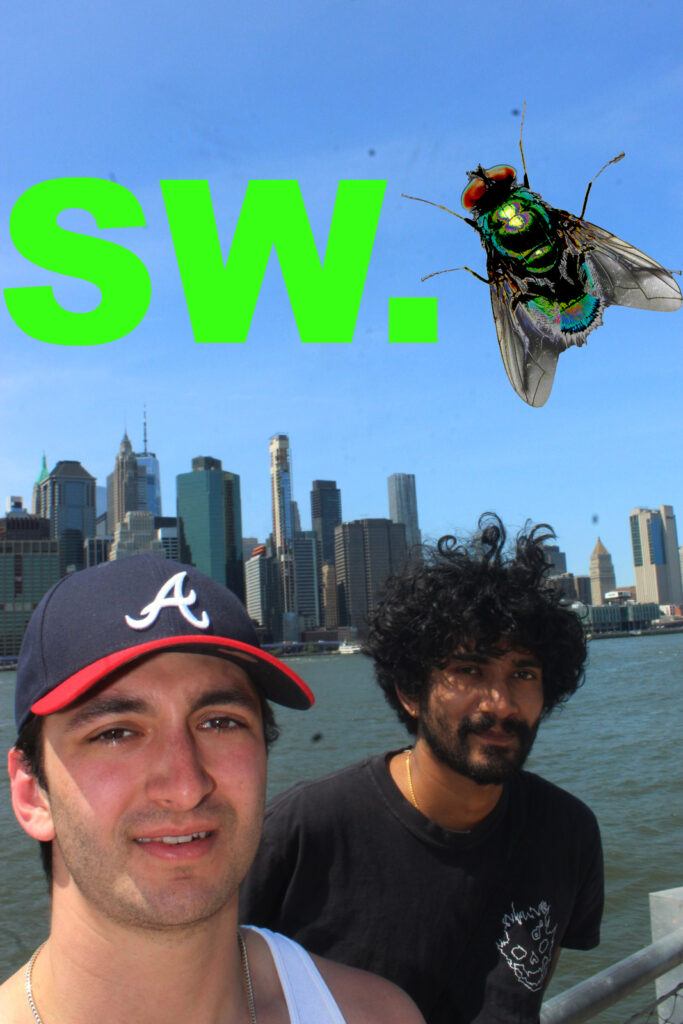
One reply on “The Bushwick Literati”
Sick piece.